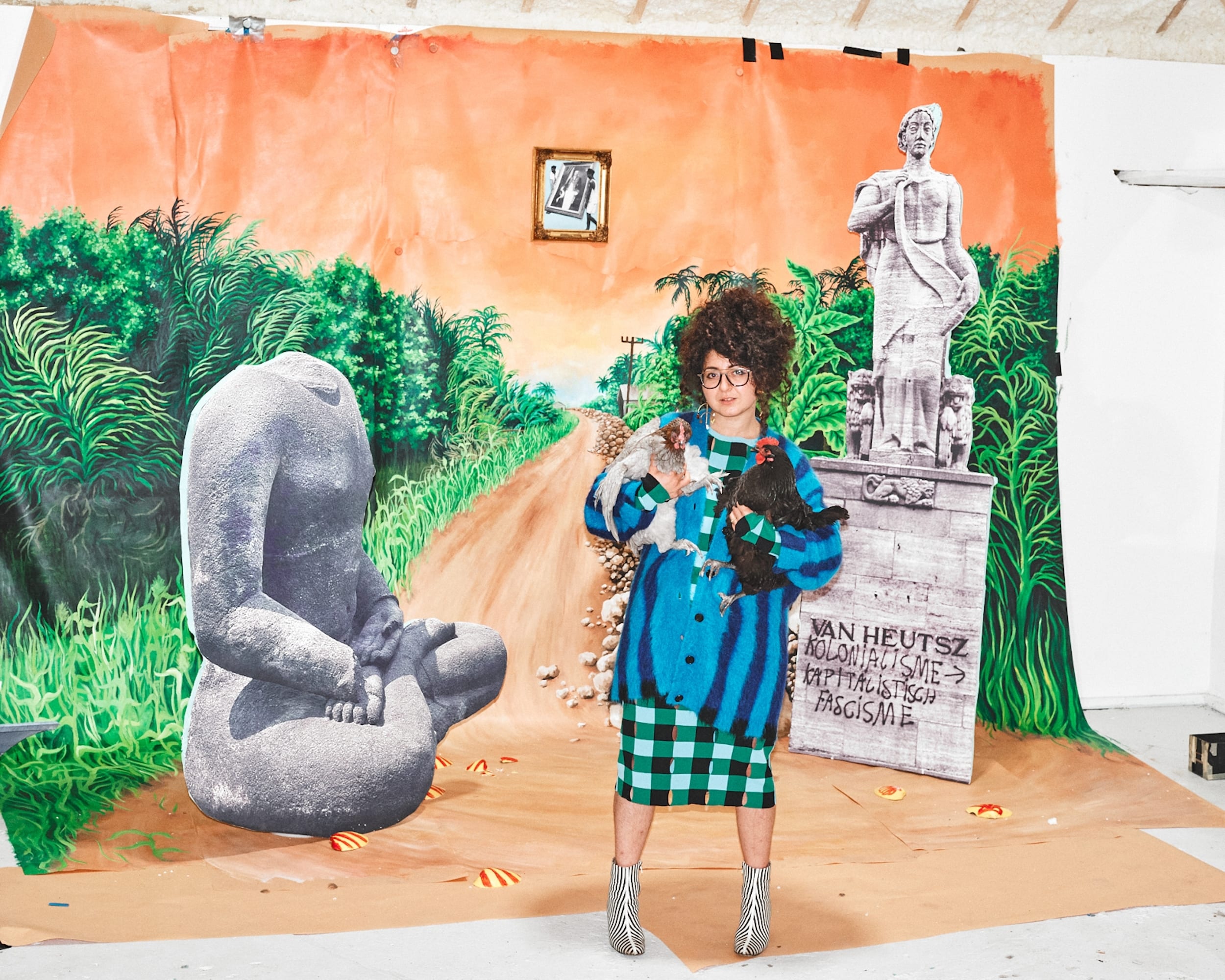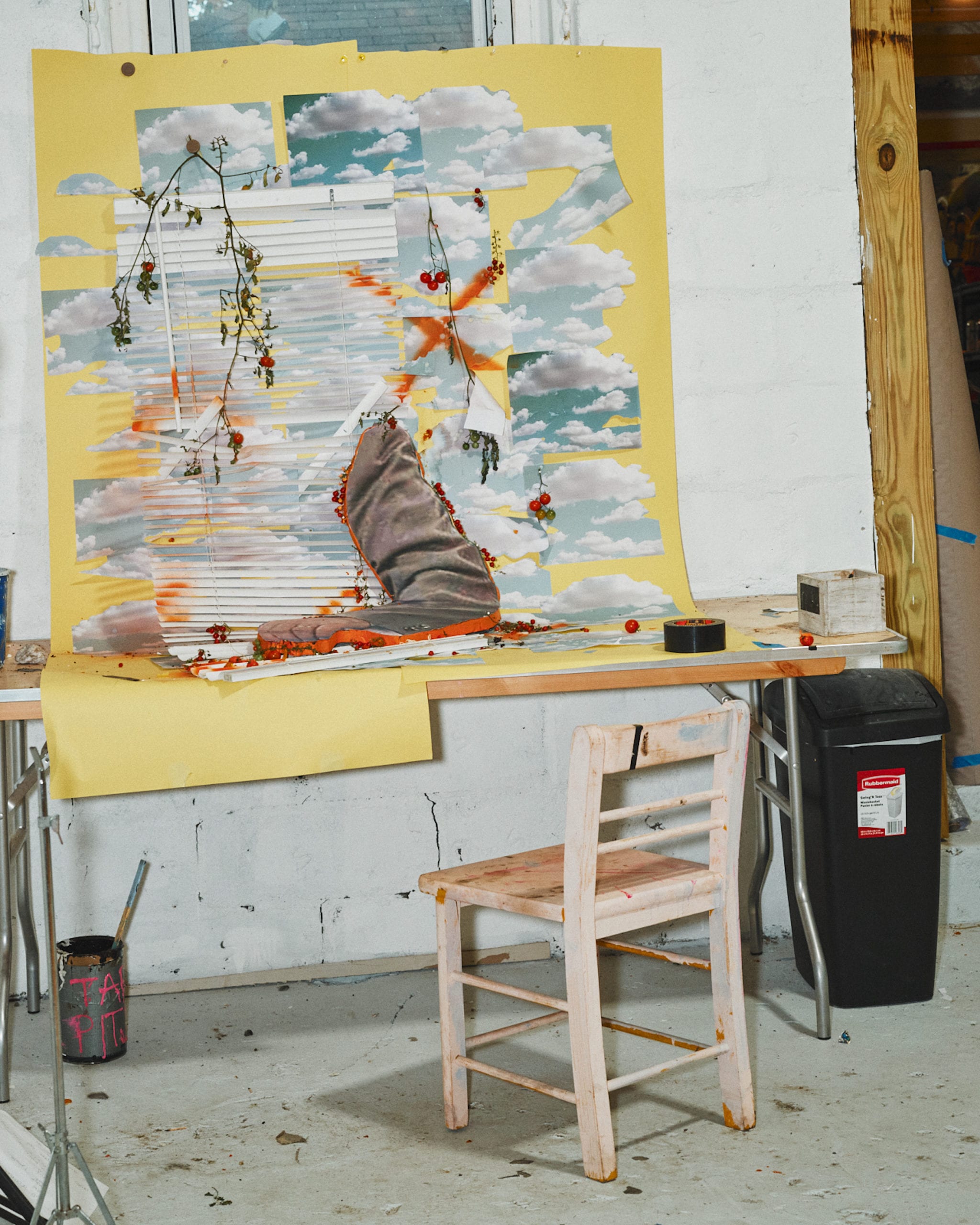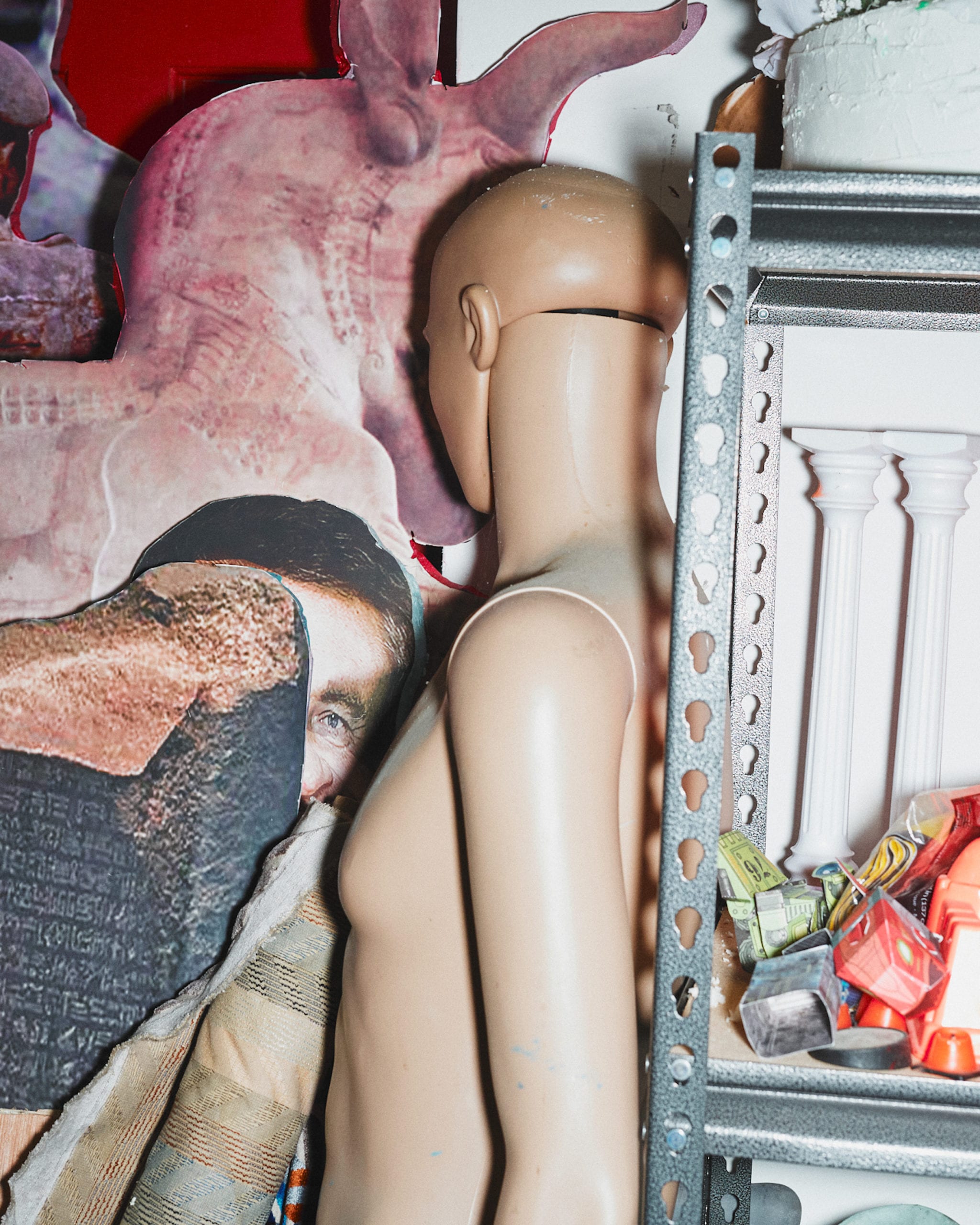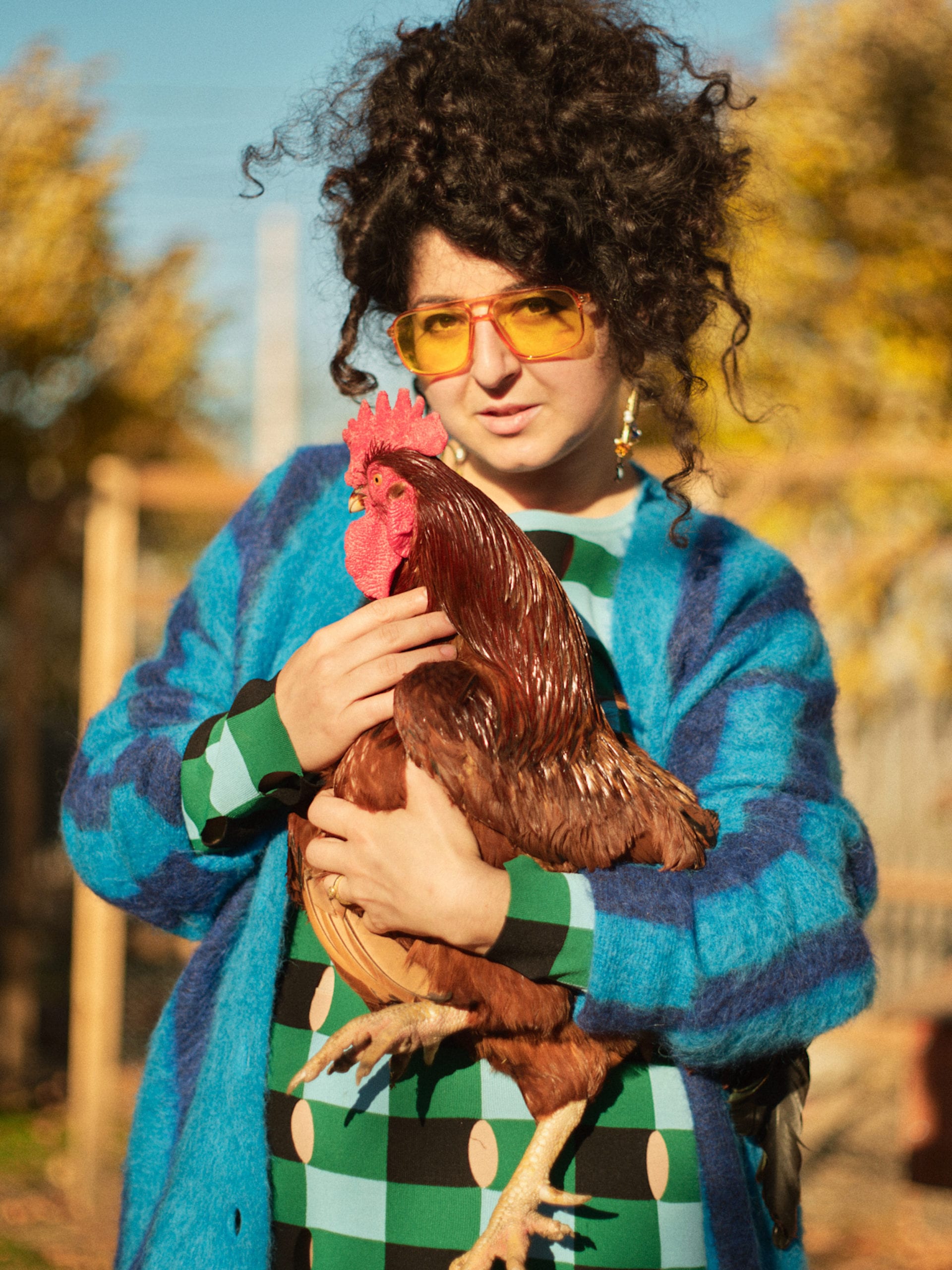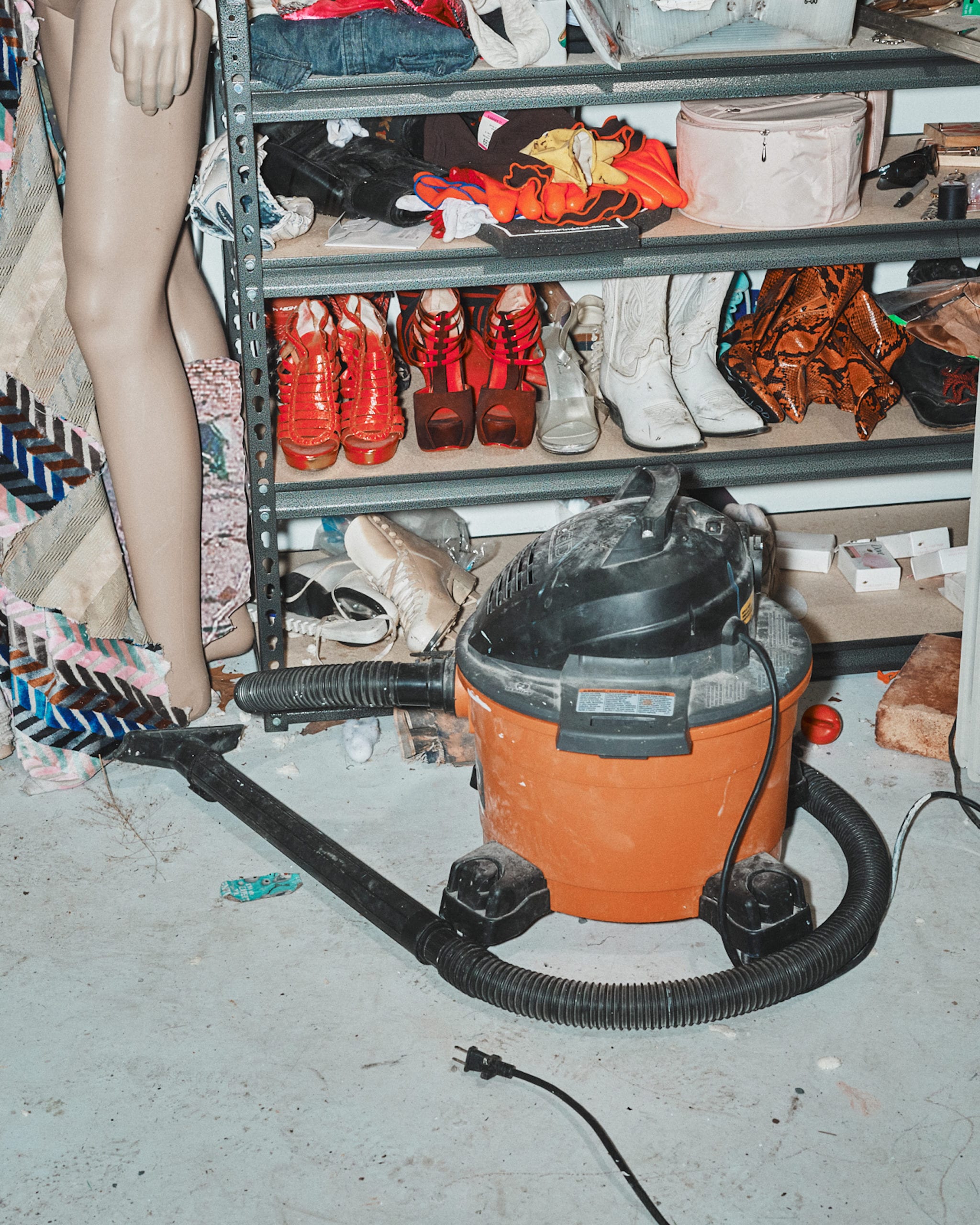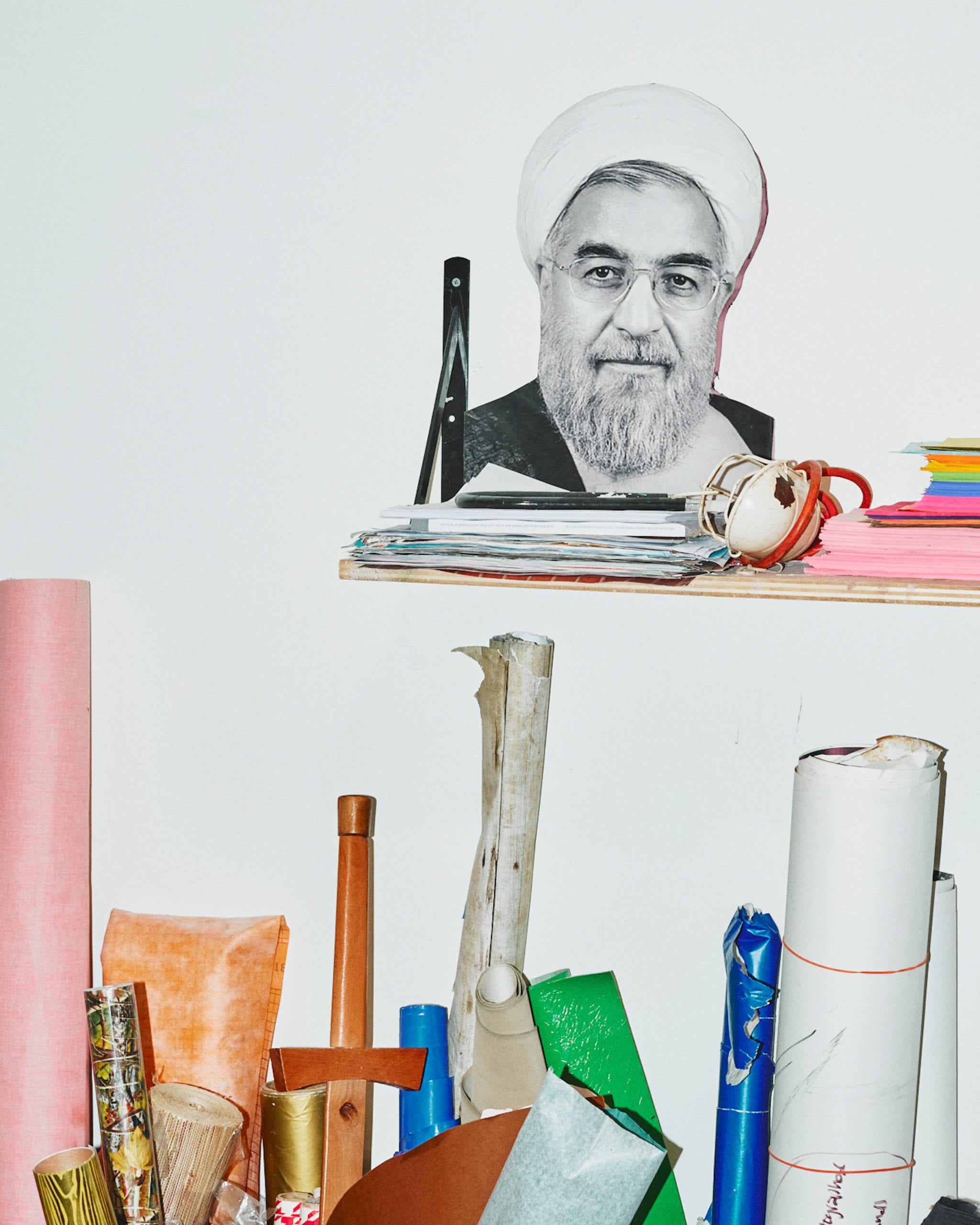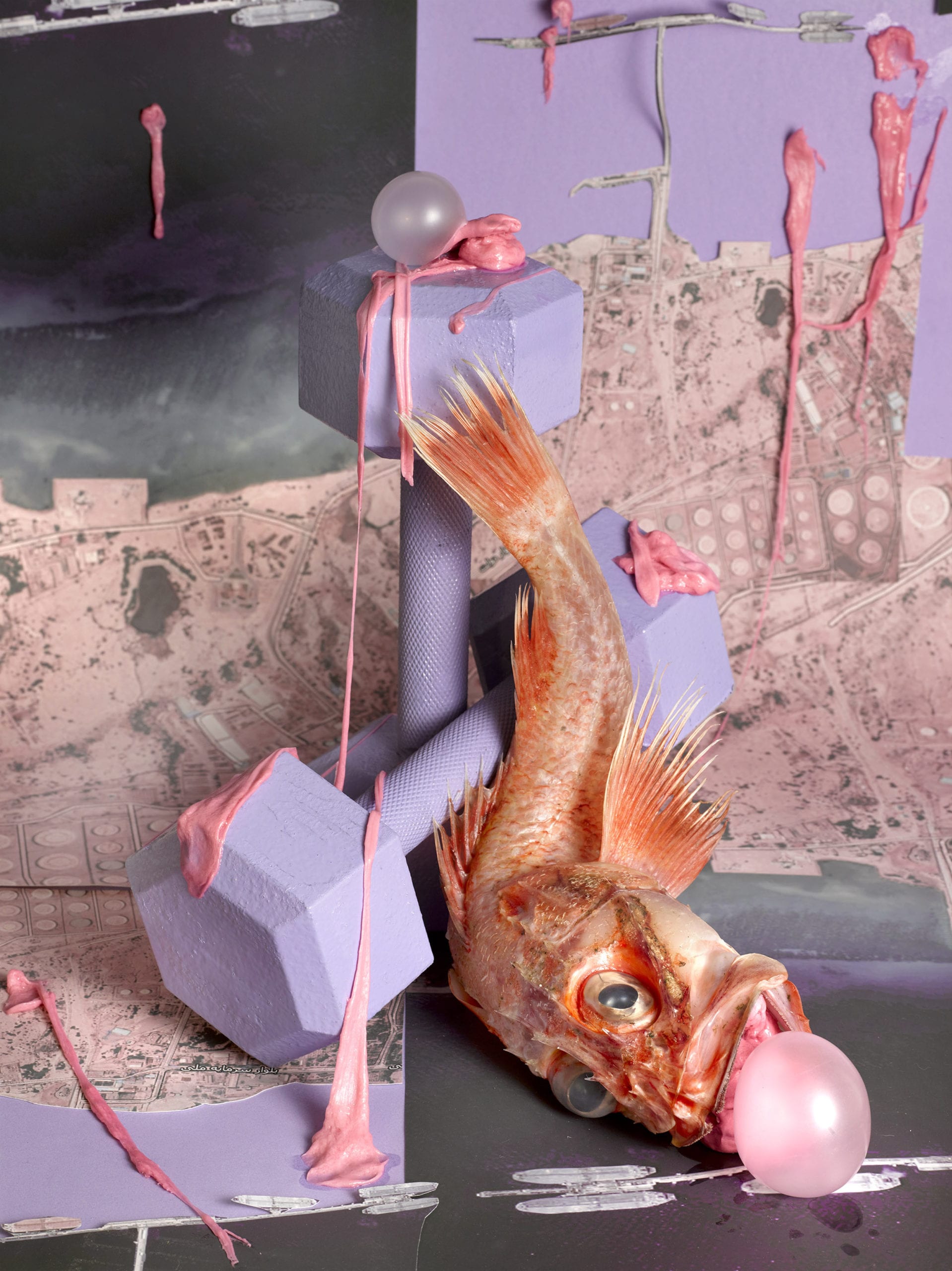Photography by Cole Barash
The Iranian-American artist invites us into her converted, 19th century barn in Rhode Island, where politically charged installations co-exist with her hobby of rehabilitating injured wildlife
Sheida Soleimani always imagined she’d become a vet. Growing up with a doctor father and a nurse mother, who were forced to flee the post-revolution regime in Iran, Soleimani considered the family practice indisputable. However, when she tried her hand at healing and rehabilitating injured wildlife with the help of her mother, she realised that the euthanasia she sometimes had to perform was too heartbreaking, and the “fixated equations of the medical vernacular,” as she calls them, were too rigid.
Comparing the medical procedures to image-making, the Iranian-American artist asserts that “photography also has a formula, with the aperture and shutter speed – but those tools are available to mess up,” as we wander the backyard of her studio and adjacent house, a converted 19th century barn in Providence, Rhode Island. “A bad or blurry photo,” she says, in air quotes, “can simply be a gesture.”
Between her first rescue raccoon, which slept inside her hair when she was five, and the grackle she rehabilitated a few days ago, Soleimani crafts a lens-based practice combining sculpture, collage and film. Tending to the wildlife that exists around her home remains a hobby, but one that is intertwined with her life as an artist. “I didn’t want to do surgery on animals, but here I am!” she laughs, cradling two of her rescued chickens, as she stands amid giant cut-outs, fabrics and test prints, hung across her studio. As she speaks, two more chickens rush inside; a visiting hummingbird chirps from the backyard. Soleimani considers living next to her studio a bliss.
“I consider my work a feminist practice, because it’s associated with the so-called female practices of cutting, making, and even care-taking”
Unlike the precision demanded of medical procedures, Soleimani considers photography flexible, and as precarious as the ongoing political climate. The pictures in her current exhibition, Hotbed, at New York’s Denny Dimin Gallery, contain many references to the political landscape with a trompe-l’œil quality. “I want to challenge the trajectory of photography,” Soleimani says, referring to the medium’s invasive history, and affinity to forensic judgement. “I seek alternatives to penetrating into a space or capturing a face without consent.” The artist avoids fully showing her subjects, often key players in the political crises she tackles. She considers reality a puzzle, with inherently imprecise parts.
The show’s central works, from her most recent series Levers of Power, were conceptualised right before the global spread of Covid-19. The series’ four photographs show the hands of Iranian and American politicians, appropriated from images of recent speeches. Politicians often criticise their opponents, and, unsurprisingly, finger-pointing is their pose of choice. Removed from their original context, the limbs and their authoritarian gestures allude to the struggles of phallic power and theatrical ridicule.
At the time, tensions between the US and Iran had risen with the killing of Iranian general Qasem Soleimani in January, and suddenly “texts and calls started to pour in because [Qasem] and I shared the same last name,” the artist remembers. While joking about him being her uncle, it was then that she experienced firsthand the duplicity of information. “Whoever my subject is, I am interested in photographing them with deconstructed realities,” she says.
The backdrops to Soleimani’s images are made up of distorted Google-sourced images that contribute to the narrative, and reinforce their political contexts. From mass graves for victims of the pandemic, to the Ukrainian plane struck down by the Iranian Armed Forces, the images she sources are available for anyone to search, and the artist is aware of this vulnerability.
“Google an image of a monument or a politician, and you’ll always read a single version of a story attached to it,” she says – rather than imposing answers, Soleimani’s lens proposes questions. In the age of algorithms and facial recognition, Soleimani’s approach to photography prioritizes interpretation and open-endedness which, she believes, have not historically been the medium’s foremost qualities. “Dick-lenses” is Soleimani’s way of referring to a canon dominated by white males, who took liberties with their penetrative cameras.
“Persian rugs, the nuclear deal, and petroleum were the only three things people knew about Iran. As an Iranian-American today, I refuse to make work with rugs”
“I consider my work a feminist practice, because it’s associated with the so-called female practices of cutting, making, and even care-taking,” she says, as she pours a glass out of a batch of homemade turmeric kombucha. I ask if she considers her practice performative. “Absolutely,” she says. “Think of this as theater, but the moment after the actors have left the stage.”
Soleimani composes an array of materials and narratives within each frame, but avoids creating a visual hierarchy between them. “There is so much artifice in photography that I need to present them all equally,” she explains. By using an F22 camera and high aperture to convey flatness among her props, each proposition is rendered equally crisp, and equally instrumental to the wider narrative.
Soleimani’s practice is filtered through the experience of an upbringing with politically-active immigrant parents, who faced the hardships of a political regime, but ensured that humor was always present. “Persian rugs, the nuclear deal, and petroleum were the only three things people knew about Iran,” she remembers, about her teenage years in Ohio. “And, as an Iranian-American today, I refuse to make work with rugs.”
Among an array of political and cultural motifs that exist throughout her oeuvre, it is apparent that birds are a consistent presence in Soleimani’s work, and her life – though, “I only photograph the birds I rehabilitate,” she insists. Soleimani’s favorite bird is a chimney swift, a medium-sized, grey bird with long, slender wings and short legs.
Each year, chimney swifts endure the hardship of migrating from Peru to New England, but when they reach their destination, they are unable to perch on tree branches because of their anatomy. Instead, they have adapted to sit on rocks, which, for the artist, is reminiscent of her immigrant parents. “Those bids’ resilience and effort to build a life for themselves definitely influenced my work,” she says. “We are like migratory birds, weathering the challenge to make the most out of the difficulties.”
Sheida Soleimani: Hotbed is on view at Denny Dimin Gallery until 23 December 2020.

